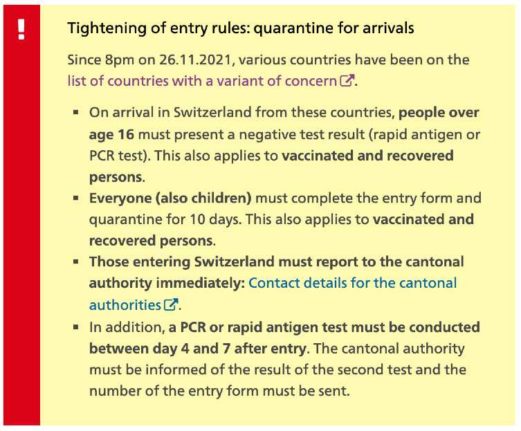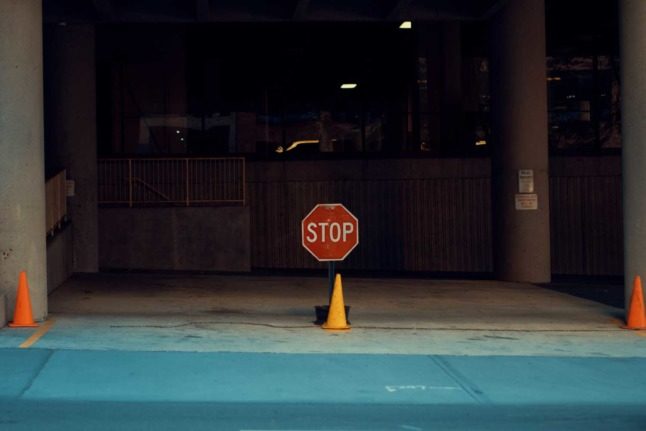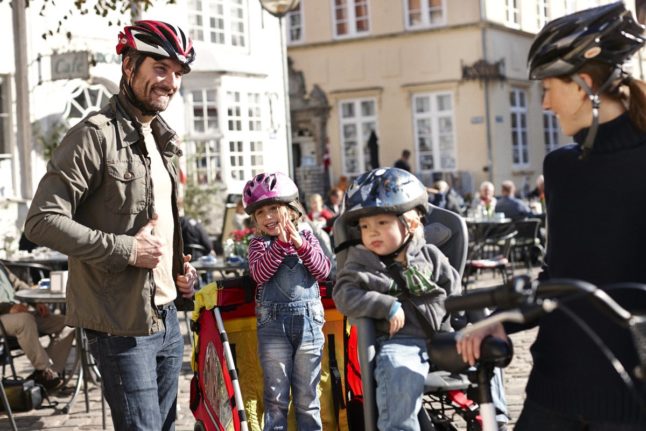Just two days after adding five countries to its virus variant of concern list, Switzerland on Monday added another four including Angola, Australia, Denmark and Zambia.
The countries were added due to concerns surrounding the Omicron variant.
Czech Republic, Egypt, Malawi, the Netherlands and the United Kingdom were added on Saturday.
READ MORE: Switzerland imposes quarantine on all arrivals from UK
On Friday, several countries were added to the list including Belgium, Botswana, Eswatini, Hong Kong, Israel, Lesotho, Mozambique, Namibia, South Africa and Zimbabwe.
The official list is available here.
People arriving from these countries need to present a negative test on arrival and must quarantine for ten days. This is the case even if people are vaccinated or have recovered from the virus.
You also need to do another test between day 4 and day 7, along with informing cantonal authorities.
You also need to fill in the entry form.
READ MORE: Here is the form you need to enter Switzerland
The full list of stipulations is illustrated below.

Click here for official government information.
What about banned countries?
Confusion has surrounded the entry requirements over recent days, largely because there are two separate lists of risk countries – to which two separate sets of rules apply.
Switzerland keeps two separate lists relating to entry rules. One, prepared by the Federal Office of Public Health and available here, lists countries with a variant of concern. Entry from countries on that list – which includes the United Kingdom – requires a ten-day quarantine.
The other, prepared by the State Secretariat for Migration (SEM) and available here, lists high-risk countries from which entry is not possible, unless you are a Swiss citizen or resident. The United Kingdom is not on this list.
The SEM list is as follows: Botswana, Eswatini, Hong Kong, Israel, Lesotho, Mozambique, Namibia, South Africa and Zimbabwe.



 Please whitelist us to continue reading.
Please whitelist us to continue reading.
Member comments